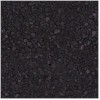|
asphalt tiles
Asphalt Tiles

Asphalt tiles are the true pioneers of the resilient tile field, and are the
most economical of the different flooring types. Asphalt tile is available only in a limited number
of colors and patterns and requires a bit more maintenance than do the others.
Another disadvantage is that it is considerably more rigid, so it tends
to be more susceptible to cracking. However, seems to be the perfect
choice for utility areas or for other places demanding an economical floor.
Asphalt tiles were developed for damp and
alkaline conditions where linoleum just doesn't perform that well. It is
extremely resistant to mold and fungal attack, mild acids, and oils and grease,
and it can be used where floor temperature is less than 80� F (27� C).
That is why they are used so often in below-grade applications.
Asphalt tile is not damaged by alkali, so can you use alkaline cleaners
on it. Simply damp mop as recommended for vinyl. When soil is not
removed by damp-mopping, wash with detergent and water, or mild
ammonia and water solution, and rinse well. Also it can be
inadvertently softened/dissolved by solvents, so do not use solvents,
or solvent-based polishing waxes on it. So be sure and wax only with
water-based wax. Also, the floor can be softened by grease so
wipe up spills promptly.
Asphalt tile flooring was mainly used commercially and in many family basements
primarily because it was inexpensive. It is hard and nonflexable, usually
9 inches by 9 inches by 1/8" thick. When you go to replace it, especially
if it has been installed over a wood floor, it will be extremely difficult to
restore the wood floor to it's natural condition as the black adhesive used to
install it is very troublesome to remove. To remove it, follow these 7 steps below:- Get a gallon of denatured alcohol solvent at
your local paint, hardware or home center store.
- Since it is flammable be very sure not to
use it near flame,
pilot light, or spark. This would include any adjoining rooms, as fumes can
travel.
- Use solvent only when windows are opened
wide for adequate ventilation.
- Apply solvent liberally to adhesive and let soak until
adhesive softens.
- Scrape off as much adhesive as possible
using a putty knife or 6 inch Wall Scraper.
- Repeat step 4 and 5 as often as needed.
- After almost all adhesive is removed, let
dry and then sand floor to
remove last residue.
This is hard, time consuming work, and
dangerous unless all cautions in using solvent are followed carefully. Check
with a flooring center store to see if any newer products which may be easier
and less volatile to use are available.
� 2008 FloorBiz, Inc. All Rights Reserved
For additional information on this and other resilient products...
FloorBiz is your starting point to all the important flooring sites on
the internet.
Flooring |
Flooring Guide |
Flooring Info |
Flooring Forum
| |
